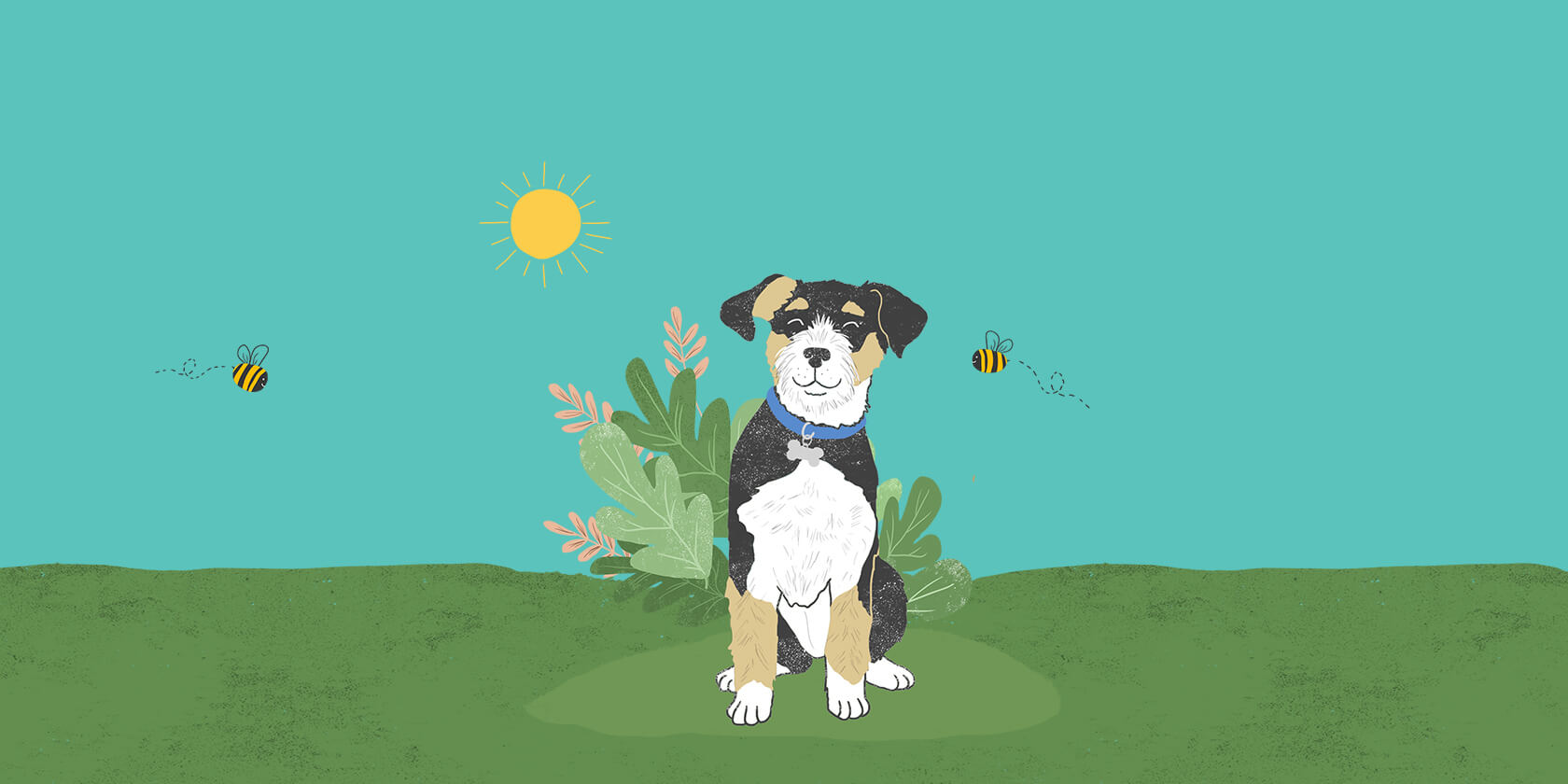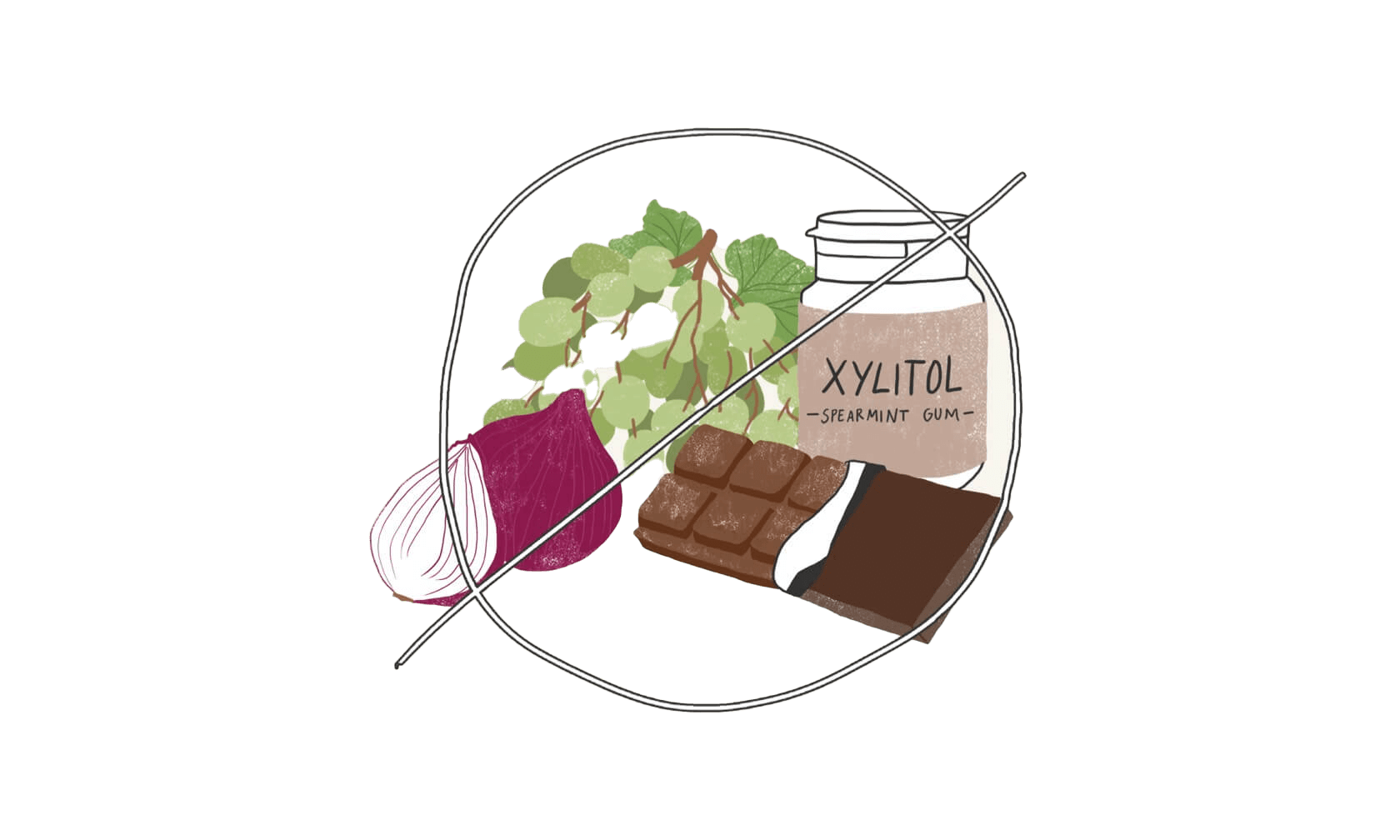Dogs chase things. Bees sting things. Dogs who chase bees can get stung. While it’s not a great combo, it’s something you may have to deal with. Bee stings can range from simple to severe. By knowing how to identify a sting, the signs of a problem to watch for, and when to seek veterinary care, you can help your dog get through an unpleasant situation without too much pain and puffiness.
How Do You Know if Your Dog Has Been Stung by a Bee?
You may not be a witness to your dog being stung by a bee, but you’re likely to see the aftereffects. Here are a few signs to help you recognize a bee sting, from benign to severe.
- Itching at the site of the sting
- Skin redness at the site of the sting
- Hives or welts
- Swelling of the eyes, ear flaps, muzzle, or other areas (not necessarily confined to the site of the sting)
- Weakness
- Vomiting and/or diarrhea
- Difficulty breathing
The milder signs may be hard to catch when you don’t know your dog has been stung. Of course, you can always look for a stinger, as some bees will leave their stingers behind. However, other stinging insects like yellow jackets, wasps, and hornets do not leave their stingers behind. And keep in mind that bites or stings from other insects can cause similar effects. If there’s any question, it’s a good idea to give your veterinarian a call.

When Is a Bee Sting Severe Enough for a Veterinary or Emergency Clinic Visit?
Many factors contribute to how severe your dog’s reaction to a bee sting will be. If your dog has had a serious reaction to a bee sting in the past — they will likely have an equally serious reaction to future stings. Even dogs that had a mild reaction to a first-time sting are at risk of a severe reaction to a future sting. Don’t try at-home treatments and call your veterinarian or visit the animal E.R. right away. It’s a good idea to have a plan in place with your veterinarian before a second sting ever occurs in dogs with extreme reactions. They can provide guidelines for at-home treatment, prescribe medication, and, for the most serious cases of anaphylactic reactions, may recommend you have certain medications available at home.
For most dogs, mild bee stings can be treated at home. However, some require emergency veterinary care. Be aware of:
- Multiple stings. Repeat stings mean more poison injected into the body, a higher degree of pain, and a greater risk of a severe reaction.
- Stings to the mouth or throat. If your dog ate a bee, the sting site will often swell. This is dangerous as that swelling can impact your dog’s airways and ability to breathe. It’s not worth the risk of waiting to see what happens — it’s time to get medical care if you are concerned.
- Worsening of any physical symptoms. If your dog has continued or increased itching, swelling, hives, or welts in the hours immediately following the sting, a call or visit to your veterinarian or local E.R. clinic is warranted.
- Widespread swelling. Any swelling that’s widespread around the body is cause for concern. Go to your regular veterinary clinic or, if after hours, head to an emergency clinic.
- Vomiting and/or diarrhea. Gastrointestinal signs like vomiting and diarrhea should never be ignored. But when they occur around the time of an insect sting, they can indicate a severe allergic reaction (anaphylaxis). You should contact your veterinarian right away or bring your dog in for evaluation.
- Difficulty breathing and weakness. If your dog has any difficulty breathing or collapses, you should immediately go to your nearest emergency veterinary clinic.
Treating Your Dog’s Bee Sting at Home
If your canine companion seems comfortable and isn’t showing any of the more severe signs of reaction, you’re probably ok to treat the bee sting at home. But keep a close eye out for worsening signs and be ready to act if anything changes.
- Remove the stinger. If you can find it, removing the stinger is your first step. Running a credit card across the stinger, in the direction of your dog’s hair growth, can sometimes do this easily. Try not to squeeze the stinger, as it may release more poison into your dog’s system. If the stinger is difficult to remove, just leave it alone to avoid traumatizing the site.
- Clean the area. Give the area a good once-over with mild soap and water.
- Calm the area. You can use many basic household products to soothe the sting site and make your dog more comfortable.
- An ice pack wrapped in a towel or cloth can help reduce swelling — 10 minutes on, 10 minutes off. Always check the temperature of the wrapped ice pack on your own skin — sites such as your dog’s nose and muzzle can be extra sensitive to temperature injury.
- A paste of 3:1 baking soda and water can also be helpful to sooth the sting site. Apply every couple of hours until the swelling subsides. Use caution as baking soda can cause stomach upset in dogs if ingested.
- An oatmeal bath may be beneficial if your pup has multiple stings. Add 1 cup of plain oatmeal, ground into a powder, to a tub of lukewarm water. A 10-minute soak and thorough rinse are all you need.
- Follow your vet’s recommendation. In some situations, a veterinarian might recommend giving the antihistamine diphenhydramine after a bee sting. It is strongly recommended that you talk with your veterinarian before you’re in a bee sting situation to see if this is the right option for your pet. There can be side effects from the medication, you’ll need to know the appropriate dosage calculated based on the size of your dog, and you’ll need direction on whether to use liquid or a pill.
- Don’t let your dog scratch or lick the sting. This will cause more irritation or an infection, and also remove any products you apply. If you have an Elizabethan collar (E-collar) at home, you might want to put it on your dog for a few hours while they are tempted to scratch and lick the site of the sting.
Preventing Your Dog from Being Stung by a Bee
It’s not the easiest thing to do, but you can take precautions to limit your dog’s risk of being stung. Avoid areas that are popular for or teeming with busy bees. Work with your dog on not pouncing on, snapping at, or trying to eat insects. And if you have a nest on your property, consider calling the proper service to have it safely relocated — many bee species are beneficial to the health of the environment and should be dealt with by professionals.
ZPC-01271R1





